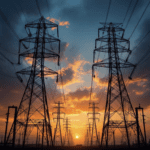In January, the U.S. Energy Information Administration (EIA) said U.S. wholesale electricity prices were less volatile in 2024 than they have been over the last few years. But that’s just one, limited perspective on the data. If we consider the macrotrends at play, it’s clear that U.S. markets won’t return any time soon—if ever—to the kind of price stability previously experienced.
The EIA’s analysis isn’t wrong. If you only look at monthly averages of certain hubs throughout the U.S., then price volatility has decreased. But, if you dig a little deeper and crunch the daily or hourly data, you get a different picture. With just a handful of outlier exceptions, the granular price data from most day-ahead (DA) and real-time (RT) markets revealed 2024 had more volatility than 2023.
For instance, of the 22 market hubs for which hourly data is available, the average standard deviation increased between 2023 and 2024 (Figure 1) for all but two—Electric Reliability Council of Texas (ERCOT) North and ERCOT Houston—where a milder winter and lower natural gas prices likely held volatility in check.

I’m not trying to knock the EIA. They do good work. Rather, I want to make the point that we’re not going to return to the way things were. Price volatility is here to stay for the foreseeable future because of the arrival of four market fundamentals that aren’t going away any time soon. The changes include:
- Increasing Supply of Renewables. It used to be that when demand peaked, so did prices. But as solar and wind power begin to supply substantial amounts of power in regional markets, peaks in net demand play a more important role in setting prices. Solar irradiance typically coincides with late afternoon increases in load, which means net demand often peaks later in the day as the sun begins to go down. Wind and wind power-generation usually pick up as the sun drops, making the two renewables a good, dovetailed pairing. But neither source is guaranteed, and if the weather is unpredictable, so is the energy supply, which makes prices more volatile. (Not to mention the effects of renewables price cannibalization.)
- Increasing Weather Volatility. Yes, the weather is getting more unpredictable, too. And more extreme. Weather has always been a major factor in determining electricity demand, and extreme or rapidly shifting conditions generally affect market pricing. Heatwaves or cold spells increase demand for cooling or heating, often leading to higher electricity prices due to peak consumption. Storms or droughts can also disrupt power generation or transmission, reducing supply and driving up prices. The frequency, duration, and intensity of heatwaves have all steadily increased in the U.S. since the 1960s. The length of the heatwave season has also increased from less than 25 days to 70 days. At the same time, droughts and heavy precipitation events are also becoming more frequent and intense.
- Changing Demand. There’s going to be more pressure on prices because demand is growing faster than previously expected. It’s happening globally, but the U.S. is a perfect example. After nearly a decade of flat growth, demand has surged since the COVID pandemic and is picking up speed with reindustrialization and the growth of data centers. But it’s not just about increasing demand, it’s also about the shifting demand patterns, which are being driven by the electrification of residential and commercial heating and transportation, plus the emergence of behind-the-meter solar and energy storage.
- Continuing Transmission Congestion. Transmission congestion limits the ability of grid operators to balance supply and demand optimally, and affects pricing and price volatility. When some areas of the grid have sufficient transmission capacity and others don’t, this causes “price separation” in a market. Then, scarcity pricing and behavioral responses exacerbate the volatility in constrained areas of the grid. The National Transmission Needs Study released by the U.S. Department of Energy (DOE) near the end of 2023, pointed to historically high levels of within-region congestion and the need for large transmission deployments as soon as 2030 to avoid worsening conditions.
Volatility could settle down a bit with increasing capacity of energy storage on the grid and if natural gas prices remain low, as they were in 2024. But market participants should accept that price volatility is the new normal. For some, that isn’t all bad news, because where there’s risk, there’s also opportunity. This is especially true for independent power producers (IPPs) and traders who get ahead of the adoption curve with predictive analytical tools that will eventually become prerequisite for risk management. For more information on forecasting tools and how they’re being used, check out the white paper, “Cost of Uncertainty: The Challenges and Value of Accurate Price Forecasting.”
—Sean Kelly is co-founder and CEO of Amperon, which launched its first price-forecasting service in October 2024. Kelly has been at the forefront of the energy trading industry, working for Tenaska, Lehman, EDF, and E.On. While at EDF, he led the transition of two nuclear plants (Nine Mile and Ginna) into the New York Independent System Operator (NYISO) market, then led the buildout of E.On’s North American trading desk. Next, he co-founded Bridge Power Consulting, which was sold to Albireo Energy in 2019. He co-founded Amperon in 2018, and as CEO led the company to a $20 million Series B fundraising round in 2023.










